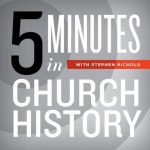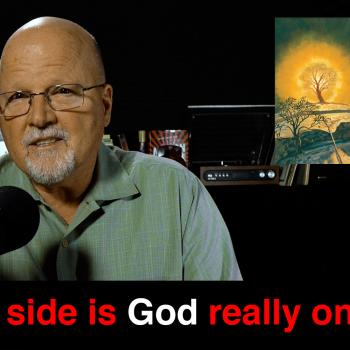
It is called, appropriately enough, the Via Dolorosa, Latin for “The Way of Sorrows.”
For Jesus, it absolutely was a way of sorrows — every single excruciatingly painful step of it, from the Antonia Fortress (where Pilate sentenced Him), to Golgotha (where Jesus’ execution awaited Him).
In this PODCAST, we will walk that path together.
It was what we call Good Friday. For the Jews, it was Preparation Day… not to prepare for the Passover, but for the Sabbath. It just happened, on this particular year, that Passover also happened to fall on that day. So, special preparations had to be made by 3:00 that Friday afternoon.
Now, before we move along, remember this: God created us with emotions. He wants us to feel. He is also a God of celebration. This is written throughout the Scriptures. And, the Bible tells us repeatedly that He is a God of contemplation.
And, in my humble opinion, true contemplation is a lost art amongst most 21st century evangelical Christians.
When you think of it, contemplation and celebration are the two sides of the same coin that we call “worship”.
The same God who said:
Let them praise His name with dancing and make music to Him with timbrel and harp. (Psalm 149:3)
Also said:
Be still and know that I am God (Psalm 46:10)
Celebration and contemplation.
For fear of swaying too far in one direction or another, many churches today tend to sway… well, toward one direction or another. But as Jesus said, we should worship in truth and in spirit.
God is Spirit, so those who worship him must worship in spirit and in truth. (John 4:24)

Therefore, as we trace the fourteen stations of the cross, along the route that Jesus took from his sentencing to His crucifixion, we should be both celebratory and contemplative in truth and in spirit. We should encounter an emotional experience as we literally or figuratively walk along the Via Dolorosa as if we were walking along with Him. Simultaneously, we should pause and contemplate what Jesus experienced every step of the way to His execution.
The first station is where Jesus was sentenced to die.
Pilate asked them, “Then what should I do with this man you call the king of the Jews?”
13 They shouted back, “Crucify him!”
14 “Why?” Pilate demanded. “What crime has he committed?”
But the mob roared even louder, “Crucify him!”
15 So to pacify the crowd, Pilate released Barabbas to them. He ordered Jesus flogged with a lead-tipped whip, then turned him over to the Roman soldiers to be crucified. (Mark 15:12-15)
I find it interesting that not a single one of the Gospel writers offered an explanation or a description of what Jesus’ flogging and crucifixion looked like.
They didn’t need to. Their readers knew all to well what that looked like.
The second station is where Jesus carried His own cross.
Carrying his own cross, he went out to the place of the Skull (which in Aramaic is called Golgotha in Latin, it is called Calvary).
Now, to be historically accurate, Jesus carried just the cross beam, not the entire “T” shaped cross. The post would have been waiting for him at Calvary. This cross beam probably weighed between 30-40 pounds. He was so weakened from blood loss, being flogged, beaten, and sleep deprived that He could hardly walk, let alone carry the beam on His lacerated back. Crucifixion, and the processional that took place before it, served as both a punishment and a deterrent for anyone even thinking about committing crimes against Rome. This is why the Via Dolorosa winds its way through the heart of the city to the hill outside the ancient city boundaries.
The third station of the cross reminds us of when Jesus fell for the first time along that road. This is actually one of the stations not mentioned specifically in the Gospels. However, given Jesus’ condition, along with Isaiah’s prophesy, it is a certainty that He stumbled at least once.
He was oppressed and afflicted,
yet he did not open his mouth;
he was led like a lamb to the slaughter,
and as a sheep before its shearers is silent,
so he did not open his mouth. (Isaiah 53:7)
Station number four: Jesus meets His heartbroken mother.
Like station three, this is not mentioned in the Gospels. However, we do know that Mary was indeed with Jesus at the cross, watching her firstborn son die, as John wrote:
When Jesus saw his mother there, and the disciple whom he loved standing nearby, he said to her, “Dear woman, here is your son,” 27 and to the disciple, “Here is your mother.” From that time on, this disciple took her into his home. (John 19:26-27)
You may remember the prophesy Simeon offered 33 years or so earlier at Jesus birth:
“This child is destined to cause the falling and rising of many in Israel, and to be a sign that will be spoken against, 35 so that the thoughts of many hearts will be revealed. And a sword will pierce your own soul too.” (Luke 2:34-35)
So, whether Mary encountered her son along the path to Golgotha, or only at the foot of the cross… either way, you can be sure that her heart shattered!
And station number four prompts us to contemplate her broken heart.
Station Five: Simon of Cyrene helps Jesus carry His cross.
Along the way, they came across a man named Simon, who was from Cyrene, and the soldiers forced him to carry Jesus’ cross. (Matthew 27:32)
Cyrene was a region in North Africa with a large Jewish population at the time. It’s likely that he traveled to Jerusalem to make a pilgrimage for Passover. He was just an innocent bystander who is now forever immortalized as a major player in the Greatest Story Ever Told.
I find it interesting that Mark dives a little deeper into Simon’s identity, listing his sons Alexander and Rufus (Mark 15:21). We read about Rufus in Romans when Paul offered this:
Greet Rufus, that special servant of the Lord (Romans 16:13)
It’s entirely possible that Simon’s son came to his faith in Christ due to his father’s experience of carrying Jesus’ cross.
The sixth station is where Veronica wiped the blood off of Jesus’ face.
The story of Veronica is celebrated at Catholic and Protestant churches across the globe, yet it also is not mentioned in any of the Gospels. Early church tradition identifies her as Veronica of Caesarea Philippi, way up north at the base of Mount Hermon. According to tradition, she offered her veil to Jesus and He wiped the blood from His face on it and the image of His face miraculously was transferred in His blood onto what we call today the Veil of Veronica. I find it interesting that the name Veronica is a compound name, and is half Latin (Vera, which means “true”) and half Greek (Icon, which means “image”).
Now, whether or not this moment actually occurred, Isaiah 53 still tells us for certain:
He was hated and rejected;
his life was filled with sorrow
and terrible suffering…He suffered and endured
great pain for us…He was wounded and crushed
because of our sins;
by taking our punishment,
he made us completely well…He was painfully abused,
but he did not complain.He was condemned to death
without a fair trial.
Who could have imagined
what would happen to him?
His life was taken away
because of the sinful things
my people had done.
9 He wasn’t dishonest or violent,
but he was buried in a tomb
of cruel and rich people.10 The Lord decided his servant
would suffer as a sacrifice
to take away the sin
and guilt of others. (Isaiah 53:3-10)
Station seven commemorates Jesus falling a second time. While this also is not chronicled in the Gospels, I am certain that Jesus stumbled several times. Why else would they compel someone else to carry His cross? Jesus knew and even prayed the Psalms. I wonder if, while Jesus tread down the Via Dolorosa, He prayed the words of Psalm 38:
I am bent over and racked with pain.
All day long I walk around filled with grief.
7 A raging fever burns within me,
and my health is broken.
8 I am exhausted and completely crushed.
My groans come from an anguished heart. (Psalm 38:6-8)
Station eight marks where Jesus consoled the women of Jerusalem. This is written about in Luke 23,
A large crowd trailed behind, including many grief-stricken women. 28 But Jesus turned and said to them, “Daughters of Jerusalem, don’t weep for me, but weep for yourselves and for your children. 29 For the days are coming when they will say, ‘Fortunate indeed are the women who are childless, the wombs that have not borne a child and the breasts that have never nursed.’ 30 People will beg the mountains, ‘Fall on us,’ and plead with the hills, ‘Bury us.’ 31 For if these things are done when the tree is green, what will happen when it is dry?” (Luke 23:27-31)
In other words, if this is how the Romans will treat an innocent, living Tree, how will they treat a dying nation? (as will happen in AD 70)
At station nine, Jesus falls for the third time. This is the final station which is not specifically mentioned in the Gospels. Once again, I think about Psalm 38 with contemplation:
My heart beats wildly, my strength fails…
I am waiting for you, O Lord.
You must answer for me, O Lord my God.
16 I prayed, “Don’t let my enemies gloat over me
or rejoice at my downfall.”17 I am on the verge of collapse,
facing constant pain. (Psalm 38:10-17)
At station ten, Jesus is stripped of His garments.
Then they crucified Him, and divided His garments, casting lots, that it might be fulfilled which was spoken by the prophet:
“They divided My garments among them,
And for My clothing they cast lots.” (Matthew 27:35)
Yes, crucifixion victims were always killed naked and exposed. The purpose was to humiliate them in every way possible.
Station eleven marks when Jesus was physically nailed to the cross.
And when they had come to the place called Calvary, there they crucified Him, and the criminals, one on the right hand and the other on the left. (Luke 23:33)
In Mark’s Gospel, he marks this time as 9:00am.
And, with due respect to the honored hymn “The Old Rugged Cross”, Jesus was not crucified at the top of a hill, but at the foot of the hill, at eye level for everyone to see. The Romans wanted their subjects to look into the eyes of the people they knew and loved as they died. And typically, it would take a process lasting three whole days before the victim actually died from crucifixion, unless the Romans took pity on them (or merely wanted to expedite the process) and broke their legs so that they could not lift themselves to breathe, thus suffocating them on the cross.
At station twelve, Jesus dies.
The time of the day was 3:00pm, the same time of the Temple Sacrifice of the Passover Lamb. However, on this one particular Passover, no lamb was sacrificed at the Temple because the skies and the Temple turned completely pitch dark from noon until 3:00 that day. There was also a city-rocking earthquake that afternoon which put a halt to nearly everything.
Instead, for all mankind, THE Sacrificial Lamb was slain not at the Temple, but at Calvary.
Jesus cried out with a loud voice, saying, “Eli, Eli, lama sabachthani?” that is, “My God, My God, why have You forsaken Me?”
47 Some of those who stood there, when they heard that, said, “This Man is calling for Elijah!” 48 Immediately one of them ran and took a sponge, filled it with sour wine and put it on a reed, and offered it to Him to drink.
49 The rest said, “Let Him alone; let us see if Elijah will come to save Him.”
50 And Jesus cried out again with a loud voice, and yielded up His spirit.
51 Then, behold, the veil of the temple was torn in two from top to bottom; and the earth quaked, and the rocks were split (Matthew 27:46-51)
It was there, on the cross, that Jesus died unlike most crucifixion victims. He didn’t bleed out, nor did He suffocate. He literally died of a ruptured heart.
But one of the soldiers pierced His side with a spear, and immediately blood and water poured out. (John 19:34)
Today, we know that blood and water pouring out such as this is post-mortem evidence that Jesus died of a ruptured heart muscle. The pericardium surrounding the heart was punctured by the tip of the centurion’s spear, causing what appeared to be blood and water to pour out from Jesus’ body.
He died of a broken heart. Literally.
Which brings us to station 13 when Jesus’ body was taken down from the cross.
Because the Jewish leaders did not want the bodies left on the crosses during the Sabbath, they asked Pilate to have the legs broken and the bodies taken down.32 The soldiers therefore came and broke the legs of the first man who had been crucified with Jesus, and then those of the other. 33 But when they came to Jesus and found that he was already dead, they did not break his legs….
36 These things happened so that the scripture would be fulfilled :“Not one of his bones will be broken,” (John 19:31-36)
And finally, station 14: Jesus is laid in the tomb.
Joseph of Arimathea took a risk and went to Pilate and asked for Jesus’ body. (Joseph was an honored member of the high council, and he was waiting for the Kingdom of God to come.) 44 Pilate couldn’t believe that Jesus was already dead, so he called for the Roman officer and asked if he had died yet. 45 The officer confirmed that Jesus was dead, so Pilate told Joseph he could have the body. 46 Joseph bought a long sheet of linen cloth. Then he took Jesus’ body down from the cross, wrapped it in the cloth, and laid it in a tomb that had been carved out of the rock. Then he rolled a stone in front of the entrance. (Mark 15:43-46)
All of this happened on Friday.
But, Sunday’s coming!













